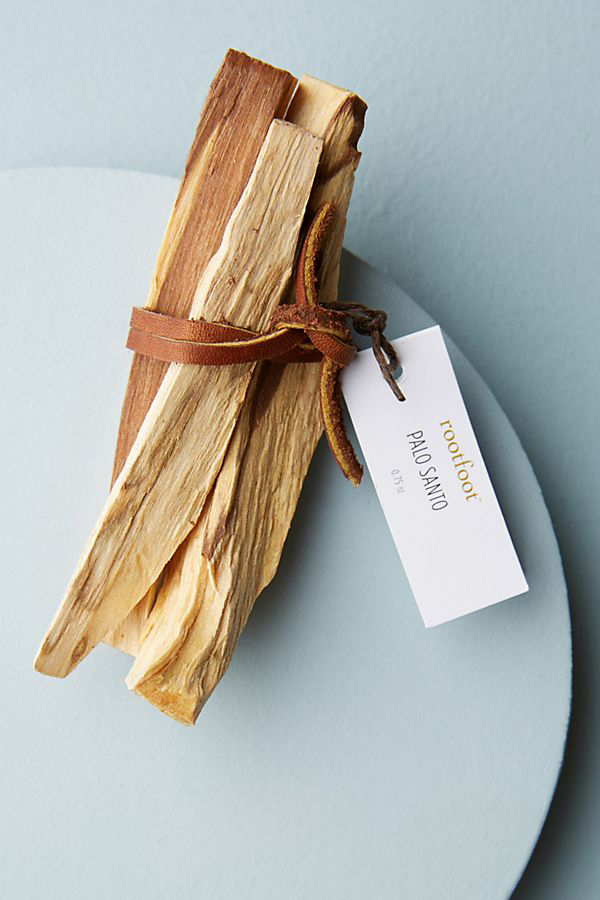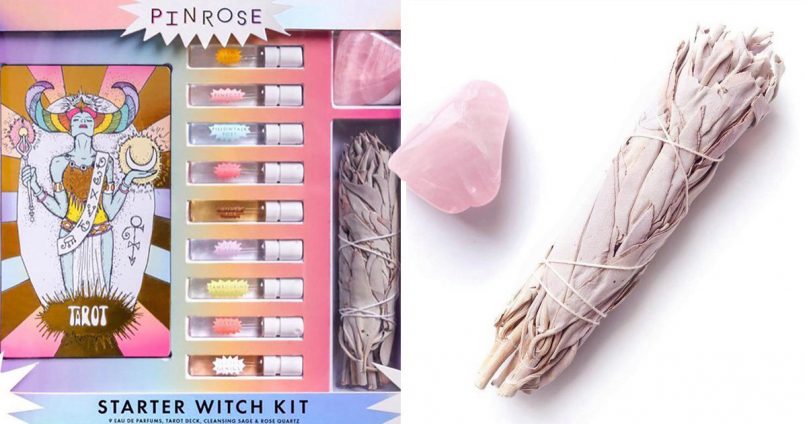(RNS) — Magic has reached Main Street. For the past few months, the high-end boho clothing outlet Anthropologie has been selling a white sage “smudging” spray — evoking indigenous American cultures’ ritual burning practices at a neat $32 for a demure spray bottle. Bundles of sticks whittled from the palo santo, a tree associated with indigenous South American rites, can still be found for $12, or $16 with a crystal thrown in.
Anthropologie has been late to recognize the potential retail worth of spiritual shibboleths. Its counterpart in the teen market, Urban Outfitters, and makeup outlet Sephora made headlines back in 2018 for selling a “starter witch kit,” including tarot cards and white sage, for $42.
Commercialization is a sign that the “witch aesthetic” — with its crystals, burned wood and tantalizing hint of transgression — has become normalized. So is a hashtag on social media; there are currently over 9 million posts on Instagram #witch, and almost 3 million #witchesofInstagram.
Not that today’s millennials are casting spells or hunting down newts for dissection. For the approximately 20 percent of Americans who identify as “spiritual but not religious,” items like Anthropologie’s palo santo represent an easily accessible approach to spiritual practice divorced from its original context in the occult, and from any identity as a shaman. Sage can be burned to cleanse a home of vaguely conceived “negative energy,” devoid of any specific metaphysical referents. Nor does engaging in indigenous smudging one day prevent anyone from practicing yoga the next and reading tarot the day after that.

A palo santo bundle available at Anthropologie. Photo courtesy of Anthropologie
For longtime practitioners of witchcraft, however, these practices represent an uncomfortable appropriation of highly culturally specific beliefs. Sephora ultimately pulled its “witch kit” from stores after a public outcry from self-identified witches, while Native American activists have long campaigned for the cessation of sales of white sage by non-Natives, citing concerns about overfarming. (While a popular refrain that white sage is endangered is erroneous — the species doesn’t appear on any federal or state-level warning lists — several New Age shops and boutiques have committed to stop selling the plant or its wood.)
But with commercialization and normalization come trivialization, according to Native activists, who have also accused chains like Sephora and Anthropologie of discounting the seriousness of religious rituals involving the makings of products they sell. Encouraging buyers to practice a denatured version of “smudging” takes it out of its natural home in Native culture, they say, and devalues it for those for whom these practices are sacred.
“These huge companies are profiting off our spirituality. That’s not how it should be, it hurts my heart quite a bit,” Amy Willier, co-owner of MoonStone Creation Native Art Gallery in Calgary, Canada, told HuffPost in 2018.
The same decontextualization has been going on in Asian religious culture since the rise in religious pluralism of the 1960s and ’70s — what historian Robert Fogel called the “Fourth Great Awakening.” The American wellness industry has been picking and choosing elements of Hinduism and Buddhism, primarily, turning them into trends so ubiquitous that many — and perhaps most — of those Americans who participate in yoga and “mindfulness” classes at their boutique fitness studios have no idea that they originated as spiritual practices.
But the popularization of magic and witchcraft in particular is distinctly 2019: It depends on the boom in the millennial nones coming of age — and the penchant for religiously unaffiliated Americans to actively seek out images and practices they see as being actively oppositional to a perceived dominant Christian mainstream.
Looking back, future historians will link the rise of the “witch” — at least as a millennial cultural phenomenon — inextricably to the rise of Donald Trump, and the politically potent white evangelical Christian nationalism that helped put him in the White House. Within that paradigm, the “witch” isn’t just a spiritual figure but a political one: one whose seemingly subversive, feminine power serves as a counterbalancing force to the highly visible evangelical (and primarily masculine) rhetoric of the Trump administration.
A wealth of Trump-era books like the 2018 anthology “The New Aradia: A Witch’s Handbook to Magical Resistance”; Michael Hughes’ 2018 book, “Magic for the Resistance: Rituals and Spells for Change”; and David Salisbury’s “Witchcraft Activism: A Toolkit for Magical Resistance,” from this year, offer members of the would-be #MagicalResistance a chance to directly harness spiritual energy in the service of progressive activism.
Within this wider coalition, folk magic and witchcraft aren’t treated necessarily as the product of their original cultures in the occult, shamanism or nature worship. Rather, they’re taken together as the joint inheritance of all those outside the United States’ dominant (white, Christian) cultural paradigm: queer Americans, people of color and other “others.”
To be a witch, in short, is to identify with the wide arc of oppression, and increasingly, the rhetoric of magic and the rhetoric of anti-Trump resistance are becoming interchangeable on the political left. Witchcraft is, for a growing segment of the population, becoming something of a civil religion, and if there is any religious import per se, it is in its subversion of evangelical Christianity.
The question is whether witchcraft can survive as radically political and transgressive even as its popularity has resulted in a corporate attempt to cash in. As long as millennials adapt rituals and spells as a force for change, companies will hawk those rituals and spells to preserve the status quo.






